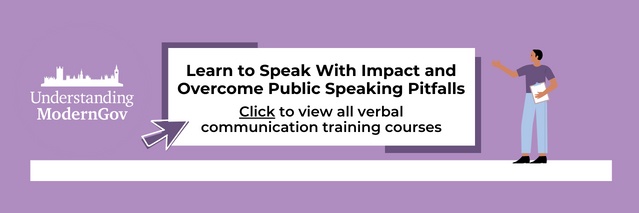What Your Digital Body Language Says About You | Plus Tips to Improve
Think back to your last virtual meeting or video call.
Did you think about how your posture might come across? How often have you used your hands to make a point? Or your facial expressions even when on mute?
Our so-called “digital body language” is almost the virtual version of in-person body language cues most of us know.
But why does it matter what our body language looks like virtually?
Contents:
- Is Digital Body Language Important?
- What Your Digital Body Language Says About You
- 4 Tips on Improving Your Digital Body Language
What Does Digital Body Language Mean?
Digital body language is the use of non-verbal communication like hand gestures, facial expressions and posture on virtual calls.
Often, it can be more difficult to convey our true meanings over virtual calls, but understanding the impact of your own and others’ digital body language can help.
Is Digital Body Language Important?
Let’s say you check your phone a couple of times or look across the room at the TV that’s on mute.
You might think no one notices, but if anything, people pay more attention to others and themselves on a virtual call than if they were face-to-face.
Although video calls might not be as clear or obvious as face-to-face interactions, your body language can still be used to tell others what you’re thinking or how you’re feeling at that moment.
Your body language can also impact your own thinking. This means that if you sit defensively with your arms crossed, you’re more likely to want to sit back and not engage in the conversation. Whereas, if you change your posture, you’ll feel more confident, powerful and alert.
Learn more about why body language is important in communication.
To illustrate this, here are three examples of digital body language and what they can mean:
What Your Digital Body Language Says About You
1. Slouched posture, bored facial expressions
This combination of body language digitally can express a lack of interest and engagement. Even if you’re not speaking at every moment in a video meeting, it’s important to give the current speaker the attention that you would expect from them.
Let’s face it, if you’re on a video call with a colleague and they’re slouched into their chair with an unenthusiastic look on their face, it’s unlikely that you’ll want to continue sharing a new idea with them.
2. Sat up straight, lack of eye contact
This type of body language can signal nervousness or even fear which may appear during video interviews, important stakeholder calls or if someone suffers from social anxiety (if so, turning the camera on is an achievement in itself!).
If you’re someone who overthinks their every move on a virtual call and wants to look or feel more natural, head straight to the next section titled ‘Tips on Improving Your Digital Body Language.’
3. Staring down at a phone
Digital body language expert and Author, Erica Dhawan, says: “It is so obvious if you are busy looking down at your phone when others are trying to make video eye contact with you.”
Not only does this come across as quite rude, but it can also demonstrate a lack of engagement in the topic or in the current speaker. It’s best to avoid multi-tasking altogether on video calls. If you need to take another call or have somewhere else to be, it’s best to let the other people know so your actions don’t surprise or even negatively impact them.
View 25 other common body language types, including examples.
4 Tips on Improving Your Digital Body Language
1. Avoid touching your face or neck
Touches to the face and neck in different areas can signal various things, such as lying, insecurity and feeling uncomfortable in a situation.
For example, if you rest your chin on the palm of your hand, this can signal a lack of enthusiasm, boredom or feeling stressed out.
Your face and neck are the two main parts shown on a video call, so try to keep your hands away from your face and neck to avoid sending instant signals that show you would rather be somewhere else but in that conversation.
Watch this video for might insights into what facial and neck touching can mean in body language:
2. Open up your posture
There’s no doubt that many people feel more comfortable when they’re at home. Whether you’re taking a video call from your sofa or at your kitchen counter, try to think about how you’re sitting. Slouching or leaning back can indicate tiredness or a sign you’re unbothered in how the meeting or conversation goes.
Aim to sit up straight, relax your shoulders to look more comfortable and sit closer to the edge of the chair to avoid the temptation to lean back.
Presenting virtually? Here are some tips on using your body language effectively in presentations - including good and bad examples.
3. Use more hand gestures
Using hand gestures on a Zoom call can make up for the lack of whole-body face-to-face interaction by helping listeners follow your conversation and keep engaged in your points. Staying still can
Bonus tip: Think about the angle of your camera. This might not sound important, but it can impact a conversation. Avoid having your camera lower than your face, as this can seem like you’re looking down on those in the meeting. Aim to have your camera the same height as your nose so your full face is evenly in view.
4. Use eye contact (but not too much)
You might think you need to stare into your camera lens on a call. But this is the opposite of what you should do and may be why you’re feeling daunted by virtual meetings. It’s not natural for anyone to do this, so get comfortable looking at other people on the call as this can help create virtual connections and help others understand your points.
If you struggle to make eye contact virtually, we’ve got a trick you can try. Cut out a picture of a face (could be someone you know or your dog) and create a hole in the middle. Use blue tac to stick this onto your laptop so the camera can clearly see through the hole. Now you’ve got a face to talk to!
Learn How to Make the Best Impact with Your Body Language
It’s easy to interpret misunderstandings through digital and face-to-face body language, but we can help you understand how to trust your own and use it to make the best impact. View our upcoming Confident Communication and Assertiveness training course to find out how.


COMPRESSED.jpg?width=640&height=424&name=2%20(1)COMPRESSED.jpg)



